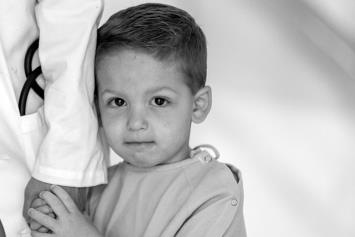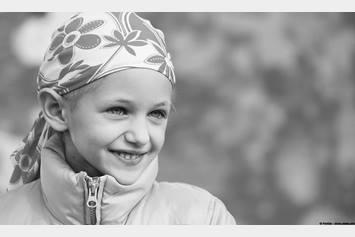Spinal Cord Tumor
Spinal cord tumors are growths that develop within the spinal canal or the bones of the spine. They can cause pain, loss of sensation, and muscle weakness.
What Is a Spinal Cord Tumor?
A spinal cord tumor is a growth that develops within or next to the spinal canal. These tumors can be benign (non-cancerous) or malignant (cancerous).
There are two different kinds of spinal tumors: intradural tumors, which grow within the spinal cord itself, and extradural or vertebral tumors, which grow in the bones of the spine.
Some spinal cord tumors are primary tumors, meaning that the tumor starts in the spine and may only be located there. Other spinal cord tumors are metastatic, meaning they have spread from other primary areas of disease, either from the brain or other parts of the body (though latter is rare in children).
What Causes Spinal Cord Tumors?
People with certain inherited genetic diseases, such as neurofibromatosis type 2 or Von Hipple-Lindau disease (a condition that affects how your cells grow, divide and die), have a higher risk of developing spinal cord tumors. No outside factors have been shown to cause spinal cord tumors. Researchers believe that in most cases, something is absent during normal development. Specifically, cells in the spinal cord grow and divide as the body develops. During this cell division process, cells need to replicate their genetic material. Errors can take place during this process, leading to mutations, which may allow cells to grow into tumors. These errors generally occur randomly and cannot be prevented.
What Are the Signs and Symptoms of a Spinal Cord Tumor?
Your child’s symptoms will depend on the location and size of the tumor. Back pain is the most common symptom of spinal cord tumors. The pain can either be at the site of the tumor or spread to other parts of the body. Sometimes back pain is worse at night. Your child might have difficulty walking or can be clumsy. They may also have a loss of sensation or muscle weakness in the legs or arms. In addition, they may have new difficulty with urination or stooling.
How Are Spinal Cord Tumors Diagnosed?
After assessing your child’s symptoms, your child’s doctor will do a series of assessments and tests to determine what type of spinal cord tumor they have. Your child’s doctor will take a health history to learn about past illnesses and risk factors. A physical and neurological exam will be completed as well. The doctor will also order imaging (MRI or CT) to see the exact location and size of the tumor. If possible, a biopsy will be done to determine the type of tumor.
- CT Scan - A CT scan uses a series of X-rays and a computer to take pictures of the head or body. CT scans are very quick imaging, usually no more than a few minutes of scanning (though preparation may take longer).
- MRI - An MRI uses large magnets, radio waves and a computer to make detailed pictures of the body. Contrast dye may be injected into your child's vein to make the tumor more visible on imaging. MRIs are very detailed imaging (provide much more information about the tumor), so take longer to perform (often 1-2 hours).
- Biopsy - Tumor cells are removed during surgery and sent to a lab for testing. This is done to find out the specific type of tumor (to finalize the tumor diagnosis) to determine how best to treat it and to understand how aggressive it is.
What Is the Treatment for Spinal Cord Tumors?
Your child’s treatment plan will be individualized based on location, size and how much of the tumor can be resected (surgically removed). Chemotherapy, radiation therapy and/or targeted therapy will also be used to shrink or kill cancer cells.
- Surgery - This is done to remove part or all of the tumor. More surgery may be needed over time if the tumor grows back. Surgery may be followed by chemotherapy or radiation therapy.
- Chemotherapy - These are medicines that kill cancer cells. One or more medicines may be given. Medicines may be oral or given through an IV or central line.
- Radiation Therapy - These are high-energy X-rays or other types of radiation. They are used to kill cancer cells or stop them from growing.
- Targeted Therapy - These are medicines (usually oral) used to target specific genetic alterations in the cancer cells and kill them.
- Clinical Trials - A clinical trial is a way to test new treatments for cancer. Ask your child's healthcare provider if there are any treatments being tested that may work well for your child. Many new treatments are only available in clinical trials.
A child may have short- and long-term problems from the tumor or from treatment. They may include things such as:
- Damage to the spinal cord that causes problems with coordination, muscle strength, and bowel or bladder incontinence. Some of these problems may be permanent.
- Problems after surgery, such as infection, bleeding and issues with general anesthesia
- Increased risk of infection and bleeding from chemotherapy
- Delayed growth and development
- Problems with reproduction (infertility)
- Return of the cancer (recurrence)
- Increased risk for other cancers later in life
Speak with your child’s doctor about what you should watch for and what can be done to help prevent complications.
Survivorship – Life After Spinal Cord Tumor Treatment
Improving the quality of life of survivors of spine tumors is an area of much ongoing research and continued progress. Some patients have little to no long-term complications from their tumor or treatment, whereas other patients experience more significant side effects. All patients will continue to be followed by the oncology team after finishing treatment to ensure they are doing well and to offer appropriate resources, therapies, and subspecialty team services as needed. Patients will also continue to get surveillance imaging (MRIs) to ensure their tumor does not grow back; as the time from end of treatment increases, these scans will be spaced further apart.
Why Choose Nationwide Children’s Hospital?
The Neuro-Oncology Program at Nationwide Children’s Hospital offers clinical excellence in treating children, adolescents, and young adults with brain and spine tumors. Patients and their families will be supported by a multi-disciplinary team of providers, all dedicated to ensuring that the patient has the best possible outcomes. Depending on the specific tumor diagnosis and treatment plan, the patient and their family will be cared for by oncologists, neurosurgeons, radiation oncologists, clinical psychologists, rehabilitation medicine doctors, neurologists, endocrinologists, ophthalmologists, therapists (physical, occupational, speech, art, music), social workers, dieticians, and/or pharmacists. These team-members all work closely together with one another and the family to provide the best care for the patient.
Cancer Clinical Research
Nationwide Children’s Hospital is also a national leader in oncology research and clinical trials. There are many ongoing research studies aimed at improving outcomes for children and young adults with brain/spine tumors—understanding why these tumors develop and how to appropriately target them. We are members of all major pediatric brain tumor clinical trial consortia including Pediatric Brain Tumor Consortium (PBTC), Collaborative Network of Neuro-oncology Clinical Trials (CONNECT), Pacific Neuro-oncology Consortium (PNOC) and the Children’s Oncology Group (COG). We have many open clinical trials testing new drugs in difficult-to-treat tumors.
Next Steps
Speak With Our Team of Experts
Our team would be happy to answer any questions or schedule an appointment.
Request an Online Second Opinion
If you are currently receiving care at another institution and would like a second opinion from experts at Nationwide Children's, we can help.



